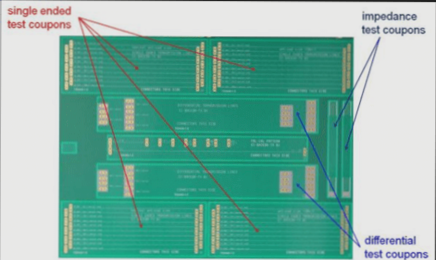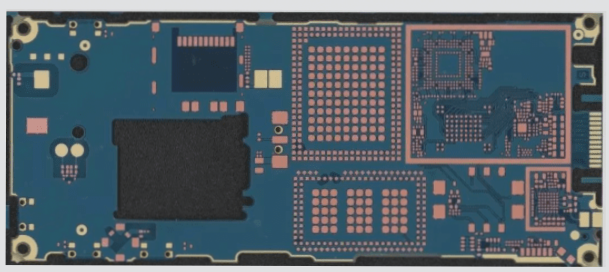1. PCB, also known as a printed circuit board, is a crucial electronic component that serves as a platform for mounting electronic components and provides electrical connections between them.
2. For hardware designers entering the electronics industry, once the electrical schematic and PCB layout of a product are completed, the next step typically involves collaboration with a PCB manufacturing facility. However, if you’re unfamiliar with PCB prototyping or the specialized engineering terminology used in the industry, effective communication can become challenging, which may delay product design progress.
3. As the saying goes, “A workman must first sharpen his tools before he can work.” For PCB engineers, choosing the right and user-friendly PCB design software is essential to improving design efficiency. The software selection can have a significant impact on the overall design timeline.

Which software is suitable for beginners just starting out? And what software can enhance the capabilities of PCB design experts? There are many PCB design software options available, both paid and free. Currently, three software packages dominate the market in terms of usage: Altium Designer (AD), PADS, and Cadence Allegro. Let’s take a closer look at their respective strengths and weaknesses.
**Altium Designer (AD)**
Most PCB engineers begin their journey with Altium Designer. AD is a user-friendly, entry-level hardware design software that is easy to learn. It is ideal for designing simple single-sided and double-sided boards, as well as four- or six-layer designs through schematic design and circuit simulation. The software seamlessly integrates technologies like PCB layout and signal integrity analysis, which makes it easier for engineers to design. When used effectively, AD significantly improves both the quality and efficiency of circuit design.
**PADS**
PADS is widely used by many engineers due to its simplicity and ease of use. It is more intuitive and easier to operate than Protel, and is particularly suited for low-end designs, earning its reputation as the “king of the low-end.” One of its key strengths is its seamless interaction with schematics—unlike Allegro, where sometimes the schematic cannot be easily linked to the PCB layout. PADS also supports real-time netlist modifications, making it suitable for minor adjustments or straightforward routing tasks.
**Cadence Allegro**
Cadence Allegro’s main advantage lies in its advanced features for repairing traces. It is intelligent and offers real-time Design Rule Checking (DRC), which is extremely useful during the design process. The software also makes wire routing and trace manipulation more convenient. As team collaboration becomes increasingly important, Allegro stands out with its superior capabilities for multi-user workflows, giving it an edge over other PCB design software.
PCB design is a long-term learning process, and each software has its unique features and advantages. PCB engineers should choose the tool that best fits their specific design needs in order to make the design process more efficient and convenient.
If your have any questions about PCB ,please contact me info@wellcircuits.com
2. For hardware designers entering the electronics industry, once the electrical schematic and PCB layout of a product are completed, the next step typically involves collaboration with a PCB manufacturing facility. However, if you’re unfamiliar with PCB prototyping or the specialized engineering terminology used in the industry, effective communication can become challenging, which may delay product design progress.
3. As the saying goes, “A workman must first sharpen his tools before he can work.” For PCB engineers, choosing the right and user-friendly PCB design software is essential to improving design efficiency. The software selection can have a significant impact on the overall design timeline.

Which software is suitable for beginners just starting out? And what software can enhance the capabilities of PCB design experts? There are many PCB design software options available, both paid and free. Currently, three software packages dominate the market in terms of usage: Altium Designer (AD), PADS, and Cadence Allegro. Let’s take a closer look at their respective strengths and weaknesses.
**Altium Designer (AD)**
Most PCB engineers begin their journey with Altium Designer. AD is a user-friendly, entry-level hardware design software that is easy to learn. It is ideal for designing simple single-sided and double-sided boards, as well as four- or six-layer designs through schematic design and circuit simulation. The software seamlessly integrates technologies like PCB layout and signal integrity analysis, which makes it easier for engineers to design. When used effectively, AD significantly improves both the quality and efficiency of circuit design.
**PADS**
PADS is widely used by many engineers due to its simplicity and ease of use. It is more intuitive and easier to operate than Protel, and is particularly suited for low-end designs, earning its reputation as the “king of the low-end.” One of its key strengths is its seamless interaction with schematics—unlike Allegro, where sometimes the schematic cannot be easily linked to the PCB layout. PADS also supports real-time netlist modifications, making it suitable for minor adjustments or straightforward routing tasks.
**Cadence Allegro**
Cadence Allegro’s main advantage lies in its advanced features for repairing traces. It is intelligent and offers real-time Design Rule Checking (DRC), which is extremely useful during the design process. The software also makes wire routing and trace manipulation more convenient. As team collaboration becomes increasingly important, Allegro stands out with its superior capabilities for multi-user workflows, giving it an edge over other PCB design software.
PCB design is a long-term learning process, and each software has its unique features and advantages. PCB engineers should choose the tool that best fits their specific design needs in order to make the design process more efficient and convenient.
If your have any questions about PCB ,please contact me info@wellcircuits.com




